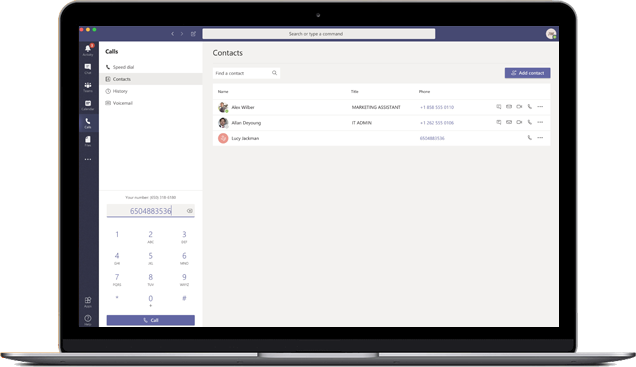There are a lot of integrations created to enhance the Microsoft Teams user and end-user experience. In fact, Microsoft Teams is one of the most popular team collaboration apps to integrate with. This does not mean that all of those experiences are quality ones, though.
To enable Teams users to have the most valuable experiences, Jeff Karas, Director of Product Management, Vonage, told me that the company has a suite of solutions that cater to the Microsoft environment, including integrations across Dynamics, Outlook, Power BI, Power Automate (to automate workflows), and the Microsoft 365 productivity suite.
He said that things became more complicated once we could no longer walk over to a co-worker and collaborate with them, prompting businesses to step up and look for unified communications and collaboration tools like Microsoft Teams to fill the gaps. On the other end of the spectrum, there were further considerations like connecting with customers outside of organizations.
“This is why we built our Vonage Business Communications for Microsoft Teams integration. It provides direct routing and allows customers to enhance Microsoft Teams with Vonage Business Communications unified communications solution for enterprise-grade calling from anywhere, along with standard PBX functionalities like call queueing and even SMS, allowing businesses to stay connected to customers no matter where their employees are located”
In the context of today, this all has a lot of implications. Not only can employees communicate internally, but they can talk with their customers. “We have built the solution so that it grows with our customers,” Karas said. Agents need to work with back offices from time to time, and the process should be streamlined, he maintains. No more toggling from application to application, enhancing the user and customer experience. Contact center agents live and breathe CRM systems, shouldn’t they also be able to log customer information from within Microsoft Teams?
The whole point of what Microsoft hopes to achieve centers around productivity, agility, and scalability; words that have become far more than ‘buzz’ over the last year. Going into 2021, Karas said companies need to re-examine their business goals, internal workflows and ask themselves: Is the experience the same as it was in the office?
If not, businesses are likely being held back by their current technology stacks. The transition was difficult for some, but for others, who had access to the same tools they had in the office, moving to the cloud, working from home, and team collaboration, went off without a hitch. When you’re looking for the right vendor to partner with, Karas insisted that they must be willing to grow with you. Working with a provider who can blend the unified commutations and contact center aspects will become imperative moving forward, he said, adding, in support:
“Wallboards do not exist anymore, so we put agent dashboards into our Dynamics integration which lets them see their stats in one place”
Integration does not only mean adding the ability for agents to receive a call – it means performing data dips to make intelligent decisions, to automate some agent experiences, and to deliver it to agents when they receive a call from a customer so they can extend the best possible CX, Karas concluded.
